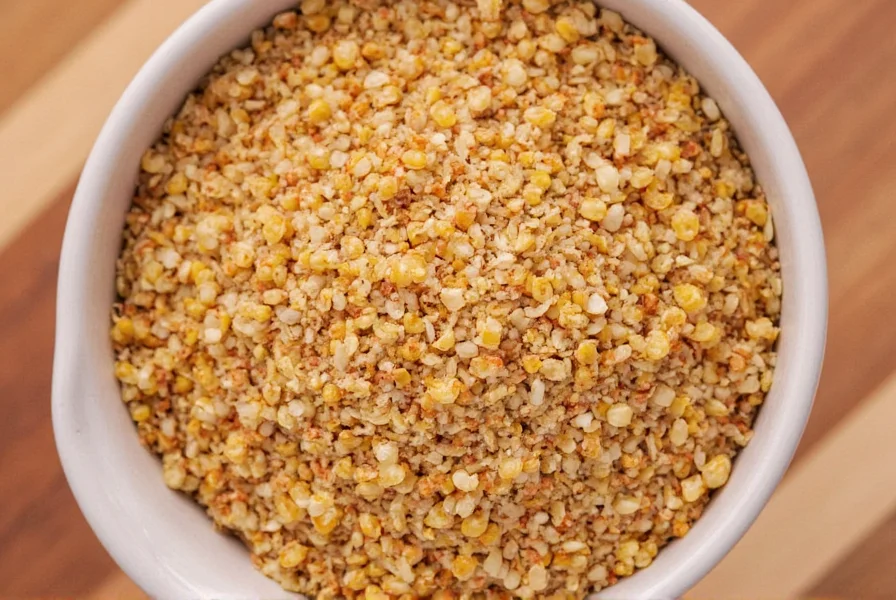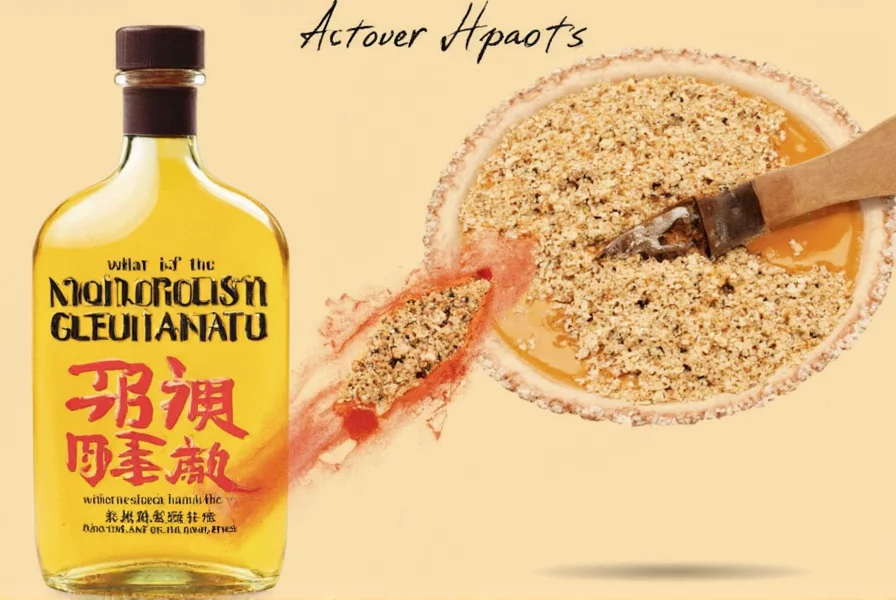Table of Contents
Monosodium glutamate (MSG) is a sodium salt of glutamic acid, a naturally occurring amino acid, used as a flavor enhancer to add umami taste to food. It is generally recognized as safe (GRAS) by the U.S. Food and Drug Administration (FDA) and World Health Organization (WHO) when consumed in normal amounts. First isolated from seaweed by Japanese chemist Kikunae Ikeda in 1908, MSG enhances savory flavors without adding saltiness.
What Is Monosodium Glutamate?
Monosodium glutamate (MSG) is the sodium salt of glutamic acid, an amino acid found naturally in many foods. It was discovered in 1908 when chemist Kikunae Ikeda identified glutamate as the source of umami—the fifth basic taste alongside sweet, sour, salty, and bitter. Chemically, MSG consists of glutamate (an amino acid) bonded to sodium. Unlike table salt, MSG provides savory flavor without increasing sodium content significantly (it contains 12% sodium by weight compared to 39% in table salt).

Glutamate in Nature: The Science Behind the Savory
Glutamate occurs naturally in many common foods. These natural sources contribute to umami flavors in dishes without added MSG. For example, tomatoes, cheese, mushrooms, and breast milk all contain glutamates that enhance savory profiles.
| Natural Sources of Glutamate | Examples |
|---|---|
| Dairy | Cheese, yogurt |
| Fruits & Vegetables | Tomatoes, mushrooms, spinach |
| Meat & Seafood | Beef, chicken, fish, shellfish |
| Processed Foods | Bouillon cubes, soy sauce, fish sauce |
Common Uses of MSG in Cooking
MSG is widely used across global cuisines to enhance savory flavors. It works best when added to dishes where umami is desired but naturally low. Key applications include:
- Boosting broth, soup, and stew flavors
- Enhancing roasted or grilled meats and vegetables
- Improving stir-fries, noodle dishes, and sauces
- Adding depth to vegetarian and vegan recipes (e.g., mushroom-based dishes)
Myths About MSG: Separating Fact from Fiction
Despite decades of use, MSG remains surrounded by misinformation. Major health organizations have thoroughly investigated these claims:
- "Chinese Restaurant Syndrome" Myth: The FDA and WHO state there is no consistent scientific evidence linking MSG to headaches or other symptoms. Double-blind studies show no reliable connection between MSG consumption and adverse effects in the general population.
- "MSG is Artificial" Myth: MSG is derived from natural fermentation of starches, sugars, or molasses. It is chemically identical to the glutamate found in tomatoes, cheese, and breast milk.
- "MSG is Unsafe" Myth: Regulatory agencies worldwide, including the FDA, European Food Safety Authority (EFSA), and WHO, classify MSG as GRAS (Generally Recognized As Safe) when consumed in normal amounts.

Frequently Asked Questions About MSG
What is monosodium glutamate exactly?
Monosodium glutamate (MSG) is a sodium salt of glutamic acid, an amino acid that occurs naturally in many foods. It is a flavor enhancer that specifically amplifies umami—the fifth basic taste often described as savory or meaty. Chemically, it consists of glutamate (an amino acid) bound to sodium. The FDA classifies MSG as GRAS (Generally Recognized As Safe) for human consumption.
Is MSG safe to consume?
Yes. MSG is considered safe by major regulatory agencies including the U.S. FDA, World Health Organization (WHO), and European Food Safety Authority (EFSA). These agencies have reviewed decades of scientific research and confirmed MSG's safety when consumed in normal amounts as part of a balanced diet. The FDA's GRAS designation means it is safe for general use without specific quantity limits.
Does MSG cause headaches or "Chinese Restaurant Syndrome"?
No. Scientific studies have not established a consistent link between MSG and headaches or "Chinese Restaurant Syndrome." Multiple double-blind, placebo-controlled studies (including those by the FDA and independent researchers) show no reliable evidence that MSG causes these symptoms in the general population. The original 1968 report was based on anecdotal evidence and has been thoroughly debunked by modern research.
How much MSG should I use in cooking?
Use sparingly—start with 1/4 teaspoon per serving or about 1/2 teaspoon per pound of meat or quart of soup. MSG contains 12% sodium by weight (compared to 39% in table salt), so it can actually help reduce overall sodium content while maintaining flavor. Remember: you can always add more, but you cannot remove excess MSG once added.
Can I use MSG in vegetarian or vegan cooking?
Absolutely. MSG is particularly valuable in plant-based cooking because it enhances umami flavors that typically come from meat. It works exceptionally well with mushrooms, tomatoes, soy products, nutritional yeast, and other glutamate-rich vegetables to create satisfying savory dishes without animal products.
How is MSG different from regular salt?
While both contain sodium, they function differently. Salt (sodium chloride) primarily enhances salty taste and suppresses bitterness. MSG provides umami flavor and enhances overall taste complexity without making food taste salty. MSG contains less sodium than table salt (12% vs 39%), so it can actually be used to reduce overall sodium content while maintaining flavor.
Pro Tips for Using MSG Like a Pro
Maximize MSG's benefits with these expert techniques:
- Start Small: Begin with 1/4 teaspoon per dish and adjust gradually. Too much MSG can overpower other flavors.
- Pair with Acidic Ingredients: Citrus, vinegar, or tomatoes enhance MSG's umami effect by balancing flavors.
- Combine with Salt: MSG works synergistically with salt—use both for optimal flavor without excessive sodium.
- Use in Broths and Stocks: MSG is ideal for enhancing the depth of soups, stews, and gravies where umami is key.
- Apply to Vegetables: Sprinkle on roasted mushrooms, tomatoes, or eggplant to intensify natural savory notes.
Conclusion
Monosodium glutamate (MSG) is a safe, science-backed flavor enhancer that amplifies umami in foods. Recognized as safe by global health authorities, it occurs naturally in many common ingredients. When used appropriately, MSG can elevate dishes without compromising health or flavor. Whether cooking Asian cuisine or Western favorites, understanding MSG's role helps you create more satisfying meals with less sodium.










 浙公网安备
33010002000092号
浙公网安备
33010002000092号 浙B2-20120091-4
浙B2-20120091-4